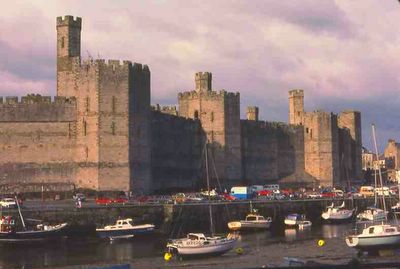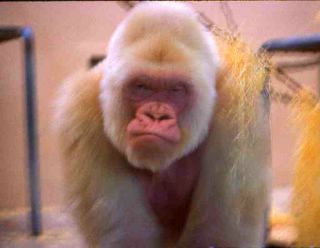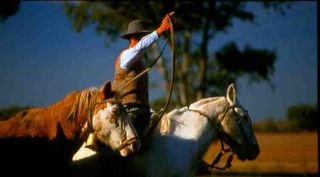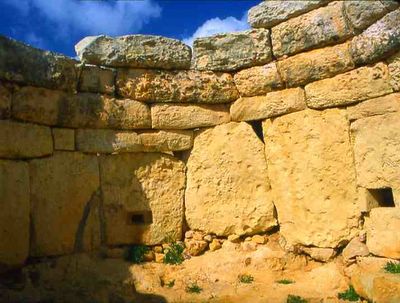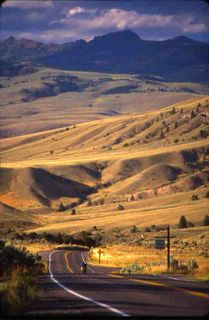
It didn't win ("competition was particularly fierce this year..." said the official letter), but Ribbons of Highway: A Mother-Child Journey Across America earned wonderful judges' commentaries in a recent Writer's Digest book contest. I entered Ribbons in both the nonfiction and "life stories" categories, and two judges read the book. This was my first contest, and Writer's Digest is the real deal, the writer's bible, so I exhaled with satisfaction when I saw these critiques:
"It read like a friend sitting in my living room, telling me about her trip. There's a friendly, flowing writing style. This book reminded me of a book I read a few years ago, in which a young woman walked the Appalachian Trail. It wasn't meant to be an exhaustive study of the route or an historical masterpiece. It was just her encounters and salient thoughts. Enjoyable!"
and
"The author did what most of us would like to do -- take off across the country with no real plans. With kids, family or good freinds, or alone. It's a very appealing premise that is chronicled...with flow and interest...And, most important, the results -- discovering the U.S., plus who they are themselves, what they mean to each other. Ms. Hein captures the flavor of the various regions they visit, their own personal feelings, emotions -- and the reader enjoys the ride!"
Both judges loved the cover, giving it 4.5 out of a possible 5 points: "Very fine cover especially" and "Nice cover photo on front!" I took the cover shot, so this pleased me, also. (And, an aside to my kids, I earned a 5 for grammar, so please DO let me edit your research papers before you turn them in...)
Many people have picked up the book and asked, of the cover photo, "Where is this?" But a striking number have picked it up and said, "Where is this...Montana?"
It is. I was standing in Wyoming, looking into Montana when I made the picture. We were in Yellowstone, and we'd overnighted at Mammoth Hot Springs, a fairyland of steaming, multi-hued travertine terraces. Wanting to go off-campus for dinner, we left the park via the North Entrance with its grand stone arch. On our way to Gardiner, Montana, where we'd find a restaurant with Dana-pleasing barstools shaped like horses' hindquarters, we stopped at the head of the Lava Creek Trail. Mike had flown from Boston to join us for a few days, and he and the kids bounded down the trail toward the Gardiner River rushing far below.
I took the photo that would become the book cover and jotted notes about the panorama I'd later write about in Ribbons:
“You traveling?” I asked the young guy sitting next to us in Gardiner, Montana’s Yellowstone Mine restaurant. To get to Gardiner, where the Yellowstone River rushes through the center of town, we drove through the Roosevelt Arch at Yellowstone’s North Entrance on the Wyoming-Montana border. In a 1903 speech, Teddy Roosevelt had dedicated the dark stone arch, saying, “The Yellowstone Park is something absolutely unique in the world…This Park was created and is now administered for the benefit and enjoyment of the people…It is the property of Uncle Sam and therefore of us all.” “FOR THE BENEFIT AND ENJOYMENT OF THE PEOPLE” is chiseled across the top of this first gateway to the world’s first national park. Yellowstone was the first place on earth to celebrate democracy by setting aside land to be kept free from settlement or development.
We’d driven down into Montana for dinner from our Mammoth Hot Springs hotel, which sat five miles away from Gardiner.
Five miles of such astonishing mountain beauty it was impossible to keep driving. I pulled off the road at the Lava Creek Trailhead, which overlooked a soul-stirring panorama, a view that reached wide and deep and long into both Montana and Wyoming. Montana stretched away in undulations of burnt-gold velvet mountains, hummocks carpeted in rich sienna pile, smooth and treeless, shaped like great, soft-furred bison sleeping under the pink evening sky. I sat on a rock and let the velvet bison and the pink sky become part of me, while Mike and the kids bounded down the steep Lava Creek Trail. They reached the creek bed, hundreds of feet below where I sat on my rock, and they ran alongside the green, rushing water. They became specks, but the wind kept us connected. It carried their voices up the mountainside to my rock, so I could listen to their joy.
Please join me at BoomerWomenSpeak.com, a major online community, where I will be the Featured Author during the month of May. I'll discuss my book and, of course, travel. I'm looking forward to it and hope you'll stop by and chat. Anyone wishing an "instant" copy of Ribbons can download an inexpensive e-book version from Booklocker, the publisher.
Another donation is on its way to UNICEF, and I will continue to donate book proceeds to tsunami relief through the month of May. Details on the Jan. 2, 2005 blog post.
"The author did what most of us would like to do -- take off across the country with no real plans. With kids, family or good freinds, or alone. It's a very appealing premise that is chronicled...with flow and interest...And, most important, the results -- discovering the U.S., plus who they are themselves, what they mean to each other. Ms. Hein captures the flavor of the various regions they visit, their own personal feelings, emotions -- and the reader enjoys the ride!"
Both judges loved the cover, giving it 4.5 out of a possible 5 points: "Very fine cover especially" and "Nice cover photo on front!" I took the cover shot, so this pleased me, also. (And, an aside to my kids, I earned a 5 for grammar, so please DO let me edit your research papers before you turn them in...)
Many people have picked up the book and asked, of the cover photo, "Where is this?" But a striking number have picked it up and said, "Where is this...Montana?"
It is. I was standing in Wyoming, looking into Montana when I made the picture. We were in Yellowstone, and we'd overnighted at Mammoth Hot Springs, a fairyland of steaming, multi-hued travertine terraces. Wanting to go off-campus for dinner, we left the park via the North Entrance with its grand stone arch. On our way to Gardiner, Montana, where we'd find a restaurant with Dana-pleasing barstools shaped like horses' hindquarters, we stopped at the head of the Lava Creek Trail. Mike had flown from Boston to join us for a few days, and he and the kids bounded down the trail toward the Gardiner River rushing far below.
I took the photo that would become the book cover and jotted notes about the panorama I'd later write about in Ribbons:
“You traveling?” I asked the young guy sitting next to us in Gardiner, Montana’s Yellowstone Mine restaurant. To get to Gardiner, where the Yellowstone River rushes through the center of town, we drove through the Roosevelt Arch at Yellowstone’s North Entrance on the Wyoming-Montana border. In a 1903 speech, Teddy Roosevelt had dedicated the dark stone arch, saying, “The Yellowstone Park is something absolutely unique in the world…This Park was created and is now administered for the benefit and enjoyment of the people…It is the property of Uncle Sam and therefore of us all.” “FOR THE BENEFIT AND ENJOYMENT OF THE PEOPLE” is chiseled across the top of this first gateway to the world’s first national park. Yellowstone was the first place on earth to celebrate democracy by setting aside land to be kept free from settlement or development.
We’d driven down into Montana for dinner from our Mammoth Hot Springs hotel, which sat five miles away from Gardiner.
Five miles of such astonishing mountain beauty it was impossible to keep driving. I pulled off the road at the Lava Creek Trailhead, which overlooked a soul-stirring panorama, a view that reached wide and deep and long into both Montana and Wyoming. Montana stretched away in undulations of burnt-gold velvet mountains, hummocks carpeted in rich sienna pile, smooth and treeless, shaped like great, soft-furred bison sleeping under the pink evening sky. I sat on a rock and let the velvet bison and the pink sky become part of me, while Mike and the kids bounded down the steep Lava Creek Trail. They reached the creek bed, hundreds of feet below where I sat on my rock, and they ran alongside the green, rushing water. They became specks, but the wind kept us connected. It carried their voices up the mountainside to my rock, so I could listen to their joy.
Please join me at BoomerWomenSpeak.com, a major online community, where I will be the Featured Author during the month of May. I'll discuss my book and, of course, travel. I'm looking forward to it and hope you'll stop by and chat. Anyone wishing an "instant" copy of Ribbons can download an inexpensive e-book version from Booklocker, the publisher.
Another donation is on its way to UNICEF, and I will continue to donate book proceeds to tsunami relief through the month of May. Details on the Jan. 2, 2005 blog post.
